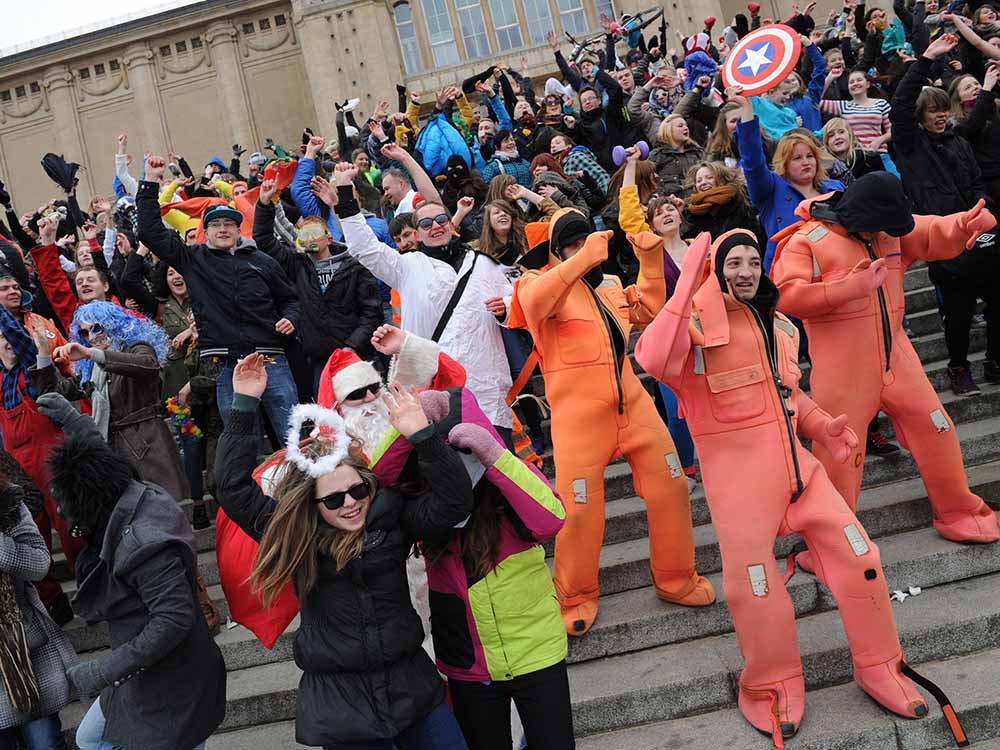Harlem Shake (2013) – The Viral Dance Phenomenon That Swept the World
In 2013, the internet witnessed a cultural phenomenon like no other when the “Harlem Shake” went viral. This comprehensive overview explores the origins of the Harlem Shake, its explosive rise to fame, its impact on internet culture, and the debates it sparked over the nature of internet virality and cultural appropriation.
The Birth of the Harlem Shake Meme
The “Harlem Shake” meme was born on February 2, 2013, when a group of Australian teenagers known as “TheSunnyCoastSkate” uploaded a 30-second video to YouTube. The video featured a masked dancer gyrating to the song “Harlem Shake” by Baauer, while his oblivious friends remained still. This video was the spark that ignited the Harlem Shake craze, and it quickly went viral.
However, the viral “Harlem Shake” meme bore little resemblance to the original Harlem Shake dance, which had its roots in the Harlem neighborhood of New York City. The traditional Harlem Shake was a dance that involved shoulder and arm movements and had been a part of hip-hop culture since the early 1980s.
The Explosive Rise of the Harlem Shake Meme
The Harlem Shake meme’s explosive rise was unprecedented. Internet users around the world started creating their own Harlem Shake videos, each following the same formula: a lone dancer wearing a mask or helmet grooving to the initial beats of the song, followed by a sudden cut to a chaotic scene with people dancing wildly.
The simplicity of the meme made it accessible to anyone with a camera, and soon, celebrities, sports teams, and even workplaces were producing their own Harlem Shake videos. The meme quickly spread to social media platforms like Facebook and Twitter, resulting in millions of views and shares. At its peak, thousands of Harlem Shake videos were being uploaded daily.
Debates Over Virality, Cultural Appropriation, and Ownership
The Harlem Shake’s viral success sparked a series of debates and controversies:
- Cultural Appropriation: The meme’s departure from the traditional Harlem Shake dance led to discussions about cultural appropriation. Many people from the Harlem community expressed frustration at the meme’s misrepresentation of their cultural dance.
- Ownership of Virality: The meme’s success raised questions about the ownership of internet virality. While the original video was created by “TheSunnyCoastSkate,” the meme quickly became a global phenomenon. This blurred the lines of who could claim ownership over a viral trend.
- Impact on Creativity: Some argued that the meme’s simplicity and formulaic nature stifled creativity and originality on the internet, as countless videos followed a predictable pattern.
- Temporary Nature of Internet Trends: The Harlem Shake’s rapid rise and fall highlighted the transient nature of internet trends. What was wildly popular one moment could quickly become outdated and forgotten.
The Enduring Legacy of the Harlem Shake Meme
While the Harlem Shake meme eventually faded from the internet, it left behind an enduring legacy. It showcased the power of the internet to spread cultural phenomena rapidly, and it demonstrated how the online community could collectively participate in a shared cultural moment. The Harlem Shake also served as a reminder of the complex discussions surrounding cultural appropriation, ownership in the digital age, and the nature of internet virality.
In conclusion, the Harlem Shake of 2013 was a viral sensation that took the internet by storm. While it generated laughter and participation from millions of users, it also sparked discussions about cultural appropriation, ownership, and the ephemerality of internet trends, leaving behind an indelible mark on the history of internet culture.











